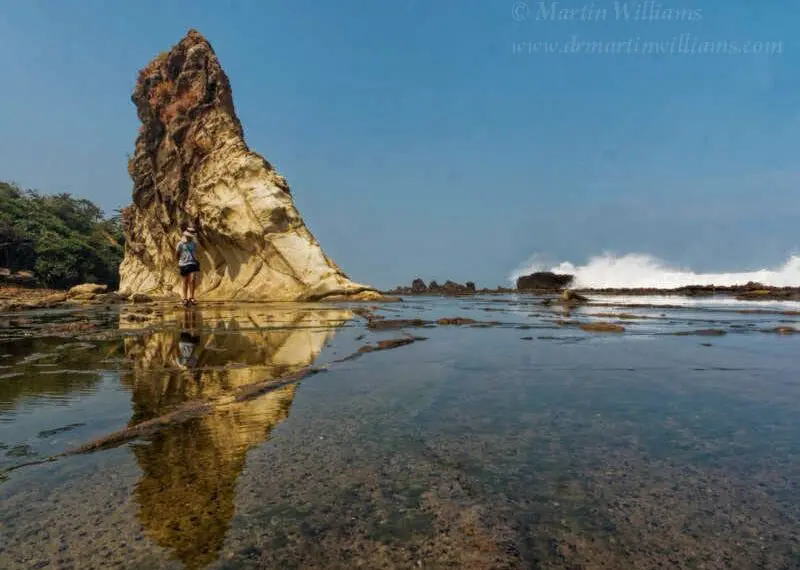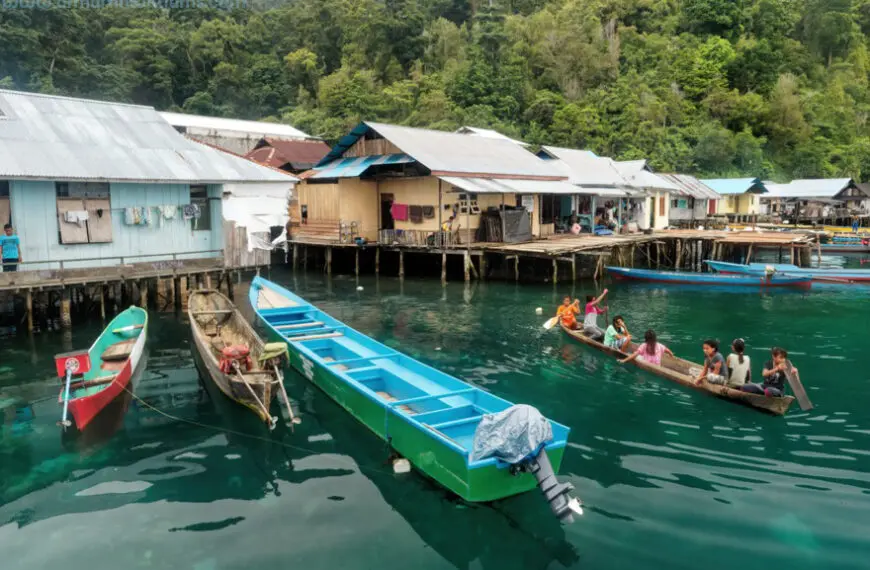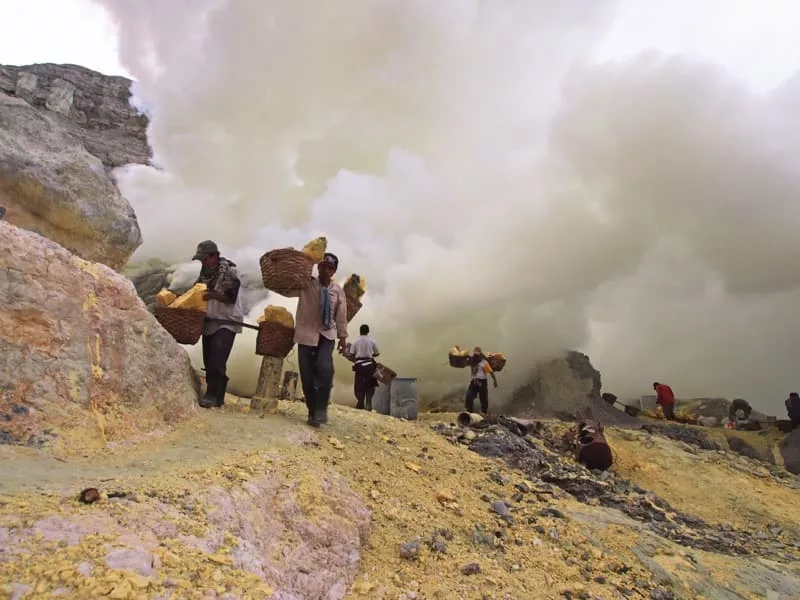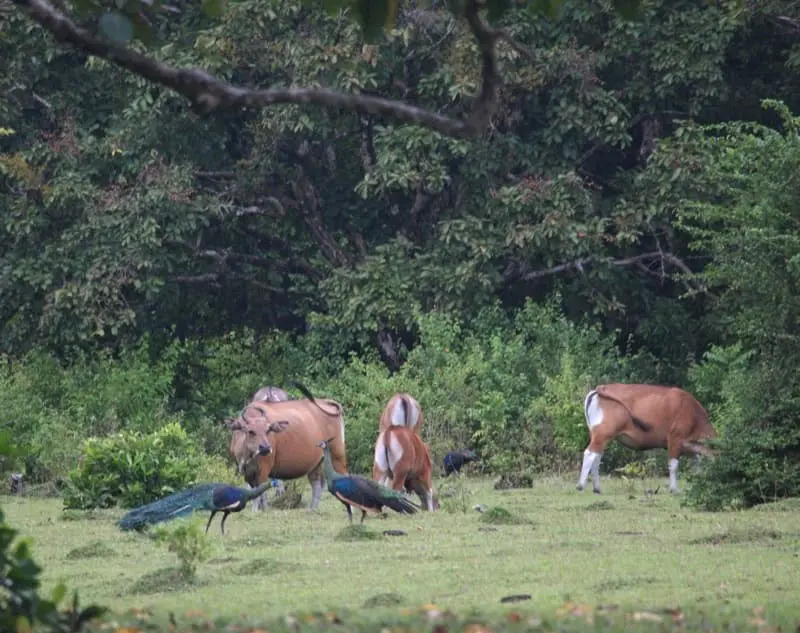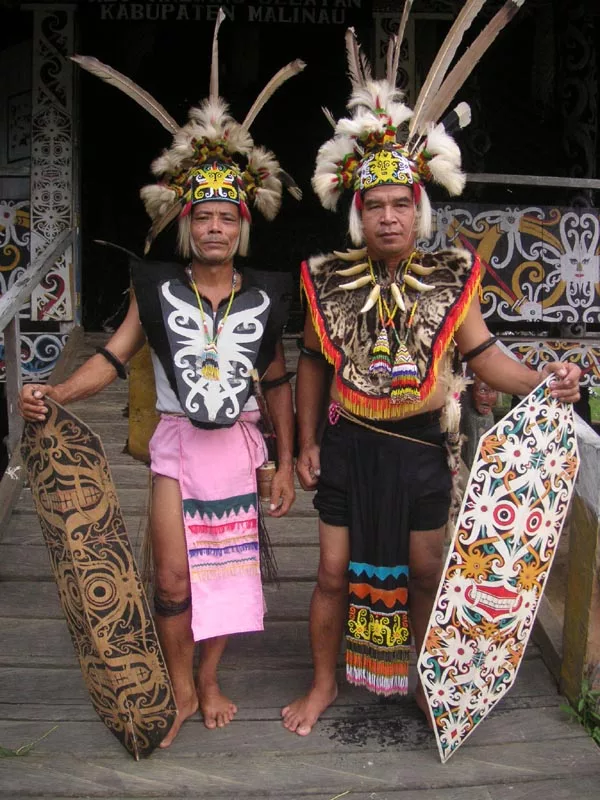Approaching Ternate from the air, I see a volcano rising from tropical blue sea, with green slopes, clusters of small houses near the shoreline.
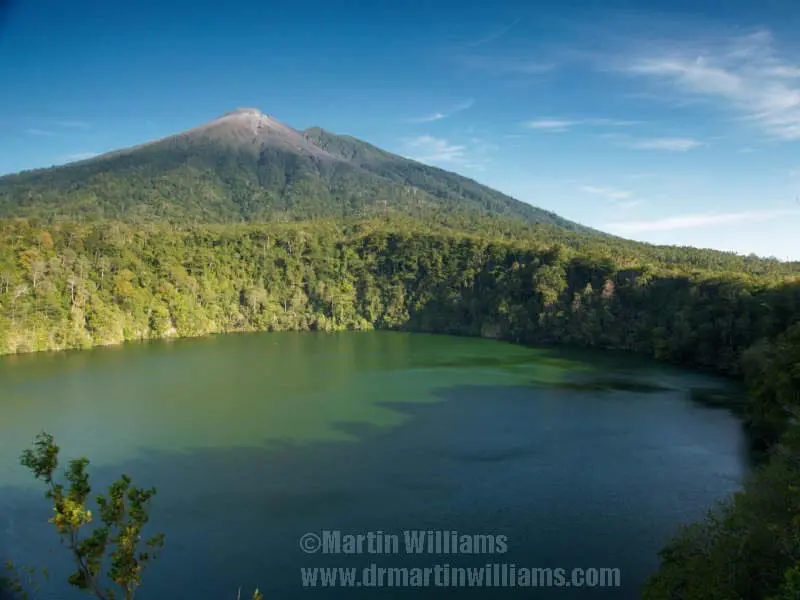
Nowadays, Ternate is an outpost of Indonesia, lying two time zones to the east of Jakarta. Yet in local lore, it’s at the centre of the universe, existing before the rest of the world came into being. During centuries when Hong Kong engaged in little but farming and fishing, Ternate was a hub of trade, visited by Chinese and Arab merchants, drawn chiefly by the cloves grown here. It became the dominant power in the northern Moluccas, or Moluku – and from the 16th century was fought over by Portuguese, Dutch and Spanish forces competing for control of the Spice Islands.
To wildlife enthusiasts like me, the name “Ternate” has a special appeal – as in 1858, the British explorer-naturalist Alfred Russel Wallace wrote the island’s name on an essay detailing his discovery of the theory of evolution. Wallace kept a house here for three years, using it as a base for his journeys within the Moluccas and further east, as he discovered a wealth of birds, butterflies and other animals, many of them new to science, and realised that this is a remarkable area of the world, a melting pot with plants and wildlife of Asia and Australasia, known today as Wallacea.

Inspired by Wallace’s book The Malay Archipelago, and enticed by the Spice Islands and the chance of adventure, I’m now travelling to Ternate and nearby with my wife and son. Not following in all of Wallace’s footsteps – especially given he roamed some 14,000 miles on over 60 separate journeys! – but heading into the heart of Wallacea and seeking some of its unique species, including Wallace’s “greatest prize”, the standardwing bird of paradise.
Sulawesi including Tangkoko and Gunung Mahawu
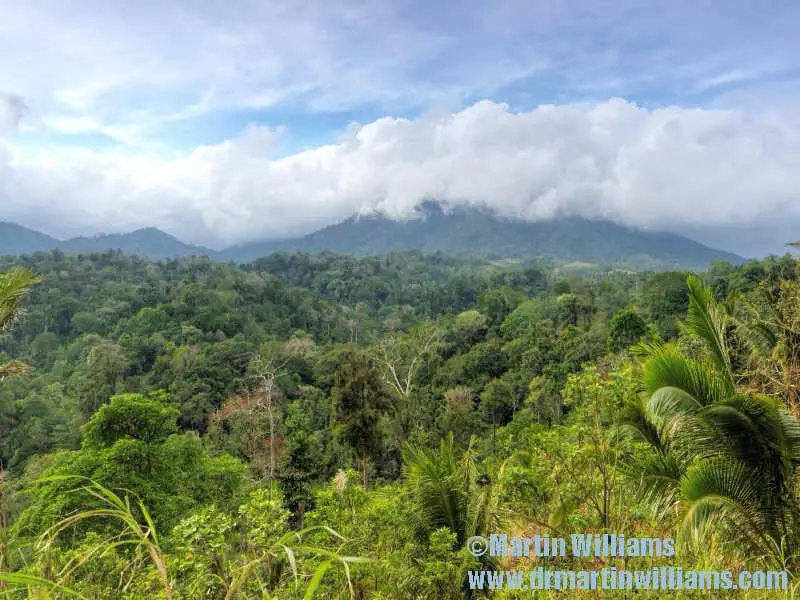
Already, we’ve encountered some marvellous Wallacea wildlife on Sulawesi, which lies between the Moluccas and Borneo. As the world’s 11th largest island, around 150 times larger than Hong Kong’s land area, Sulawesi has enough natural and cultural interest for weeks of exploration. But with a tight schedule planned, we went only to the tip of the island’s tendril-like, northeastern spur.
The chief draw was Tangkoko National Park, which safeguards lowland rainforest. Here, our guide was Irawan Halir, a local man who with thickset frame and shoulder length hair looks more like a rocker than a nature lover. He led us along paths and faint trails on gently sloping hills.

At times, there wasn’t even a bird in sight. But with persistence, we encountered jungle treasures like kingfishers, which were sometimes remarkably confiding – one Green-backed Kingfisher, with rusty underparts, blue cap, green upperparts and brilliant red bill, perched at around eye level and watched as I approached and took photos. Such birds are helping make Tangkoko a magnet for bird photographers; I guess several have featured many times on Facebook.

A male Red-knobbed Hornbill was much more imposing – perhaps 80cm long from bill tip to tail tip. He flew to a nest hole three or four storeys up a tree, then regurgitated berry-sized figs, and passed them through a tiny opening, to his unseen mate.

Irawan knew trees where Spectral Tarsiers rest during daytime. They favour tangles of aerial roots supporting fig trees, emerging at dusk to prey on insects and small animals. Peering into one tangle, we found five tarsiers looking back at us, swivelling their heads to look round, as their relatively huge eyes are too big to move in their sockets. Smaller than many a teddy bear [[body lengths around 12cm]], these are among the world’s smallest primates, and the epitome of cute. Indeed, tarsiers helped inspire the look of Stephen Spielberg’s Gremlins.

One day, a troop of black macaques strolled down to trees fringing the beach – looking statelier than Hong Kong macaques, and deserving the name “baboon-monkey” Wallace used for them. They too have made it into popular culture – when a “monkey selfie” went viral and appeared in the media, only for the photographer to be now challenged by a lawsuit arguing the macaque should own copyright.
“Bear Cuscus – in that tree,” said Irwan as we walked up one slope. Through binoculars, we found three of these rather solemn looking mammals resting in the crook of the tree. Bear Cuscus are marsupials, belonging to the possum family that’s familiar in Australia – and serve as a reminder this is Wallacea. Perhaps like many of the other species unique to Sulawesi and nearby islands, their ancestors arrived on continental fragments that collided here, resulting in fascinating yet complex geology and biodiversity.
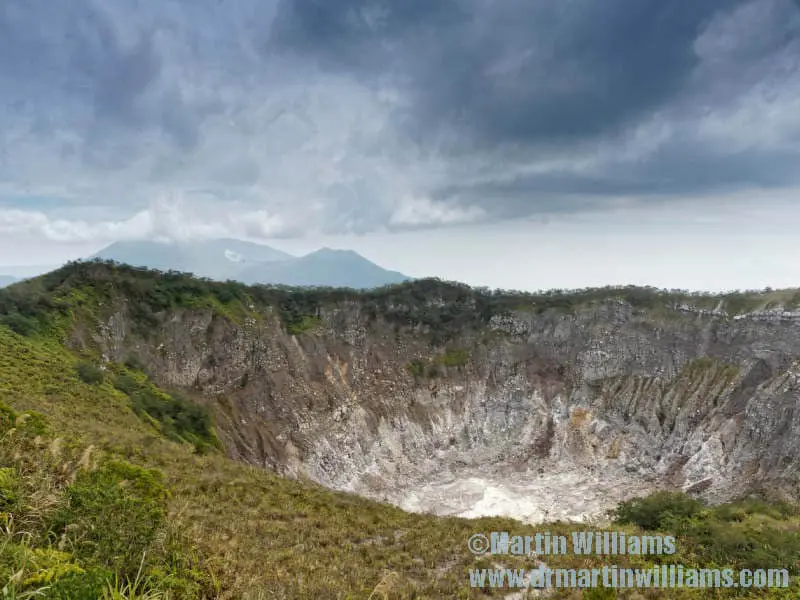

This slender spur of Sulawesi is part of the rim of fire, and we drove part way up a volcano, then walked up steps to the crater rim. It’s dormant now, but we looked across to a steaming crater on the slopes of nearby Mount Tokon, which erupted only ten days after our visit, blasting volcanic ash up to 1,500 metres into the air.
Wallace passed by here, and stayed by an upland lake where he remarked on the “general stagnation of bird and insect life”. We stopped for lunch beside another lake, in the wooded crater of a dormant volcano, and found birds and insects abounded, especially egrets and ducks. There was also an area of hot springs and boiling mud pools by the shore, and we went to investigate.

A sulphurous reek tainted the air, steam billowed from the bubbling pools. While taking photos of the primeval scene, I was careful to keep some distance, mindful that after visiting mud-springs in the area, Wallace told of a French gentleman who “ventured too near the liquid mud, when the crust gave way and he was engulfed in the horrible cauldron.”
Ternate
Though it’s just a 35-minute flight across the Molucca Strait to Ternate, we find the Moluccas quite different to Sulawesi, and the world at large. Deep sea channels prevented many species reaching here, even when sea level fell during ice ages. There are transport links, yet separation persists, with even the internet proving a challenge to access. The international traders are long gone; several times, people ask to have photos taken with me, simply as I’m a westerner.
Maybe the sense of otherness is because the Moluccas were long ruled by four sultans, the most powerful of whom held sway over Ternate and some nearby areas. After the 48th Sultan of Ternate, Mudaffa Sjah, was appointed to the position in 1975 it seems he became involved in local political intrigues that led to severe strife during early 1999 to 2002, with thousands of people killed in conflicts between warring parties including Christian and Muslim communities.

Perhaps we’re lucky not to sense simmering tensions, and find the people seemingly relaxed, welcoming outsiders. Visiting the sultan’s palace, there’s no sense of recent drama – instead, it’s like a museum, with swords and suits of armour, ornate furniture, photos from the past, samples of the nutmeg, cloves, and cinnamon that helped bring wealth to the Moluccas. We also learn that although the sultan died in February this year, his successor has yet to be chosen. While divine forces will guide the choice, I suspect there will be more mundane, political considerations too.
Even in Wallace’s day, Ternate was home to little wildlife of note. Though we see birds including a vivid blue and orange kingfisher the size of a child’s fist, we’re headed for richer areas, especially jungles on two other islands.
Bacan
One of these islands is Bacan, at the suggestion of ethno-biologist Nasir Tamalene, who had emailed saying this was where Wallace discovered the standardwing. We travel by ferry, which departs not at noon as scheduled, but after Friday midday prayers have finished.
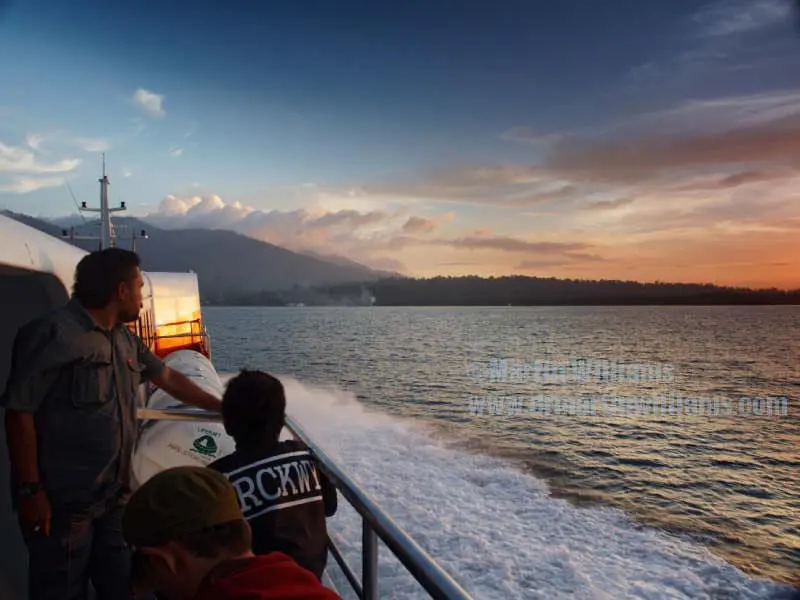
It’s barely daybreak as I start walking into the forest, using a torch to light the slender trail. After a frustrating evening yesterday, when the ferry took well over an hour to berth and both a hotel and restaurant proved hard to find, my wife and son are still in bed, and I’m being guided by two men I met just minutes ago. One is maybe in his early 40s, the other perhaps 20. Neither speaks English; I’m limited to a handful of words of Indonesian.
Not that there’s time for conversation, for we’re on a mission – to find that “greatest prize”, Wallace’s Standardwing. This is one of only two birds of paradise found outside New Guinea and its islands.

On we go, up and over fallen logs, taking care not to brush thorny palm fronds, hearing exotic sounding birds calling just out of sight. “Maleo” the older guide says on hearing a loud whistle – this is a megapode, one of the gamebirds that build mounds of leaves and lay eggs inside, to incubate in the warmth of rotting vegetation.
It’s humid. I pause, sweating profusely, then on again. The trail peters out and the guides use machetes to cut past shrubs, to a wooded slope where raucous birds call in the canopy. This is our destination: a standardwing lek.
As is typical in birds of paradise, male standardwings gather at display sites called leks, for early morning rituals as they show off their plumage in the hope of impressing females enough for the chance to mate. The first standardwing Wallace saw had been shot by his assistant Ali, who seemed much pleased with his efforts. Most of the body was ashy olive, with pale metallic violet on the head, and side feathers that could be erected to form a pointed gorget. The unique features were two slender white feathers that sprang from the bend of each wing. These were about six inches long – the same as each wing, and Wallace noted they could be raised or laid along the body “at the pleasure of the bird”: rather like ceremonial flags, or standards.
Appropriately for a special species, the standardwings are elusive. I can hear at least five, but it takes time before I glimpse even one amongst the dense foliage. It’s only a few days later, at another lek, that I really get to watch males displaying, and see they indeed raise and lower their standards, as well as fly up from a perch before parachuting down on broad, pale grey wings, then landing again and maybe dipping their heads till they are almost upside down. It’s quite a routine, yet the one female I notice only briefly inspects the performance before disappearing.
Some other birds are more easily seen, especially a flock of parrots that descends on a tree in search of fruit, the males scarlet but for their green wings – a dangerously beautiful combination that makes them popular in the bird trade, which is reducing wild populations.

Later, we head to the one small town on Bacan. Set by the coast, it has only low buildings, including brightly painted bungalows. There’s a wet market with rows of freshly caught tuna arrayed on stalls. Just opposite, people are selling “Bacan stone”, a blue-green, jade like mineral. that’s become popular in Indonesia, especially in the form of polished rounded shapes affixed to chunky rings worn by men and women. Other similar minerals are found locally, and two guys proudly show off their bling.

We stop for a look at the Sultan of Bacan’s house. It’s far less grand than the palace on Ternate, a higgledy-piggledy white-washed building with sharply pointed green roofs. “If you come back later, the sultan might see you,” a guard says to our surprise.
After sunset, we return, and sit in the reception room, surrounded by photos of sultans in ceremonial attire. I look in case there’s a shot with Wallace, who met the then sultan 156 years ago, maybe on this very site, but of course there isn’t one. A tall, slender man enters, the sleeves of his striped shirt rolled up to the elbows. To me, he looks the kind of chap you might meet in a university research department.
The sultan, whose full name is Dede Muhammad Gary Ridwan Sjah, shakes our hands, diffidently remarking, “I hope you’re not too disappointed.” We’re actually relieved by the lack of formality, and relate a little of our travels, and with me suggesting Bacan might benefit from ecotourism. The sultan agrees, though doesn’t want Bacan to host a brash resort.
Halmahera
Ecotourism is hardly a novel idea, of course. It was mentioned in a plan for the Aketajawe Lolobata National Park, established on nearby Halmahera – largest of the Moluccas – in 2004. But when we visit the park after Bacan, there’s scant evidence ecotourism has received support.
There is, however, much that could appeal to anyone with a love of wildlife and wild places. Nasir Tamalene takes us to a hamlet of wooden houses on stilts, where he finds two men to guide us into the jungle. We follow a river upstream, several times wading across thigh deep channels, discovering pristine forest of the kind that’s nowadays almost gone from places like Borneo.
Forest people live here, hunting with bows and arrows. Our guides had married into the forest tribe; one says he did so after his now father in law threatened to kill him should he refuse his daughter’s hand in marriage!

Though Wallace barely explored the island, he knew from his collectors and other sources that it was rich in birdlife, which is more Australian than Asian in character. It was perhaps while staying here that, while recovering from fever, he hit upon the theory of evolution. He wrote an essay, “On the Tendency of Species to Form Varieties; and On the Perpetuation of Varieties and Species by Natural Means of Selection,” adding the word “Ternate”, from where it was posted to Charles Darwin – prompting him to write to a mutual friend, “If Wallace had my manuscript sketch written out in 1842, he could not have made a better short extract!”
Evolutionary success requires thriving in existing and new niches, and I find one of the Moluccas commonest birds especially interesting. It’s a kind of flycatcher, and I’ve seen close relatives elsewhere, where they’re unobtrusive,. But these birds – Willie Wagtails – are bold as brass, perching atop bushes, sometimes flying high over houses. They remind me of the common bulbuls in places like Hong Kong, but there are no such bulbuls here and the Willie Wagtails seem to have cheerfully taken their niche.
I see two Willie Wagtails foraging for insects in Pak Roji’s garden, just inside the national park boundary. Not that I’m too excited: we’re here in search of far more exciting quarry, including the local specialities attracting birdwatchers to stay at his place.
Roji – properly known as Mahroji Akejawe – is a farmer with a passion for the jungle and its wildlife. Slender, with a ready smile, he doesn’t seem tough to look at, yet tells of occasional work like hiking for a whole day through the forest to a coastal market, then buying a dozen or so cattle on behalf of his neighbours, and spending two days bringing them back. During a stint as a porter for bird survey teams, he quickly developed an interest in birdwatching.

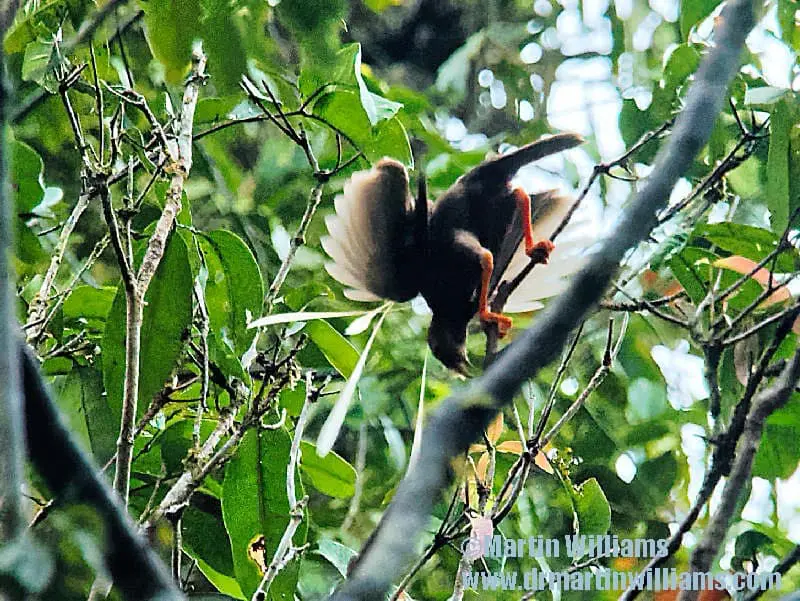
Roji takes us on a jungle foray, during which we have splendid views of standardwings, and pause to admire an immense tree – its buttress roots perhaps as wide as a couple of buses. Venturing into a small cave, we disturb a few roosting bats, and take care not to crack heads on stalactites as we scramble down to a still, clear pool. “There’s a nearby cave that a French team explored for a week, but they ran out of time before reaching the end,” says Roji.
But there’s no need to head deep into the forest to find birds. From the veranda of Roji’s wooden farmhouse we watch colourful kingfishers and bee-eaters. A stream just behind the house is the world’s best place for sightings of the flightless Invisible Rail, though for me it lives up to its name.
I’m far luckier with another speciality, which Wallace rated “one of the most beautiful birds of the East” – Ivory-breasted Pitta. Pittas are thrush like ground feeding birds, renowned among birdwatchers for often being hard to see, and maybe as colourful as kingfishers. Roji has built a screen of banana leaves by an area one likes to feed, and on our last afternoon I sit behind it, camera at the ready.

A pitta hops into view. It stands upright, and at first glance looks black above, white below. But I also notice a red patch on its belly, and shining green on its wings. It’s exquisite. Moving slowly, I take photos. The pitta seems curious about the lens protruding through the leaves and hops closer, coming so near I feel I could almost reach out and touch it. Then, it moves off, and melts away into the forest.
It’s time for me to go, too; the next morning we fly to Jakarta. As I stand, I’ve a huge smile on my face, partly as I know few birdwatchers have seen and fewer still photographed this magnificent pitta, one of the wild wonders of Wallacea.
[Written for the South China Morning Post.]
Indonesia travel articles
Kawah Ijen volcano sulphur mine and miners
Kawah Ijen volcano, east Java is an astonishing place, which I visited a few years ago. I’ve just re-edited several of…
Spectacular southern Java including Geopark
Even a relatively short road trip from Jakarta allows you to explore glorious landscapes near and south of Pelabuhan Ratu, southern…
Seram and Haruku, South Maluku: The Islands Where Birds Colour the World
At 340 kilometres long, Seram in eastern Indonesia may be one of the largest islands you’ve never heard of.
Kawah Ijen sulphur mine on Java in Indonesia
The Ijen volcano complex dominates the landscape of easternmost Java. Active craters include Ijen, which for decades has been mined for…
Javan Jungles inc Gunung Halimun and Ujung Kulon Indonesia
Exploring two outstanding national parks that are close to Jakarta, yet take time to reach – well rewarding the effort with…
Forest Conservation in Kalimantan, Indonesian Borneo
People working to save the remaining forests of Borneo, described by Charles Darwin as, “One great untidy luxuriant hothouse made by…



